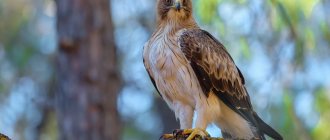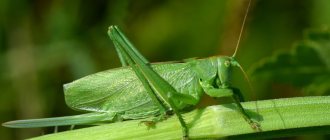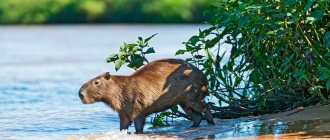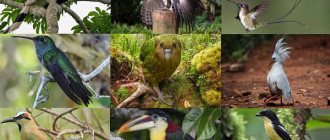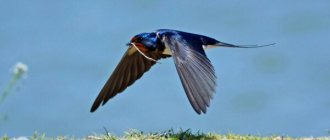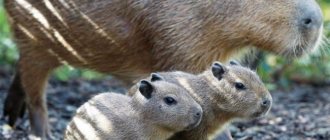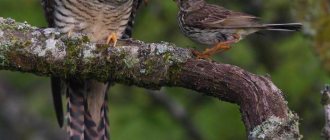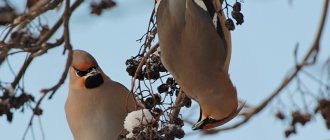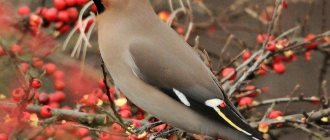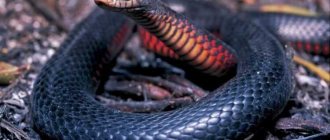Andean condor
- Weight: up to 15 kg
The weight of the Andean condor (Vultur gryphus) ranges from 11 to 15 kg for males and from 8 to 11 kg for females. The total length varies from 100 to 130 cm. The bird also has a very large wingspan - up to 3.3 m. Only four sea and waterfowl birds (wandering albatross, royal albatross, pink pelican and Dalmatian pelican) have a larger wingspan.
The Andean condor plays an important role in the folklore and mythology of the South American Andean regions. It is the national symbol of Argentina, Bolivia, Chile, Colombia, Ecuador, Peru and the peoples living at the foot of the Andes.
Dalmatian pelican
Meet Dalmatian Pelican. People also often call this bird “Baba Bird”. The Dalmatian pelican is a member of the pelican family and is very similar to its relative the pink pelican.
Unlike its predecessor, the length of the curly one is 180 centimeters, and the span is about 3.5 meters. They are also distinguished by their incredibly long beak, which ranges from approximately 40 to 50 cm.
Perhaps precisely because of its size, it is difficult for the Dalmatian pelican to move on the ground, so it does it very slowly, and it rises from the ground by jumping. It is also worth remembering that when hunting fish, this bird does not dive completely into the water, but only slightly plunges its beak into it.
Trumpeter Swan
- Weight: up to 17.2 kg
The trumpeter swan (Cygnus buccinator) is one of the heaviest flying birds on the planet. She lives in North America. The wingspan of these birds of this species can exceed 3 meters. The largest known trumpeter reached a length of 183 cm and weighed 17.2 kg.
At some point in history, trumpeter swans were almost destroyed: in the 19th and early 20th centuries they were actively hunted. By 1933, fewer than 70 wild whelks were known to exist in remote hot springs in or near Yellowstone National Park, and extinction seemed inevitable. But during an aerial survey of Alaska's Copper River in the 1950s, several thousand whelks were discovered. This population breathed new life into the species, and gradually the number of trumpeters increased to more than 46,000 birds by 2010.
Other large record-breaking birds
There are many large birds in the world, some of them fly, others only walk or run. Some birds can swim in water, others do not even come close to it.
In this section we will learn about the interesting features of different large birds.
Albatross: the largest flying bird
Albatross
The Albatross is the largest flying bird. It is known to many sailors; it calmly soars above the sea waves, arriving on land only to reproduce. The huge wingspan - about four meters - allows it to easily stay in the air.
Body dimensions: from 110 to 120 centimeters. Female weight: from 7 to 9 kilograms. Male weight: from 8 to 10 kilograms.
Where they are found: the bird is found in different parts of the country; it can be seen in different seas of the Northern Hemisphere, with the exception of the Arctic Ocean.
Sailors believe that the appearance of an albatross over the sea is a sign of an approaching storm, so the arrival of birds does not make them happy. Albatross have no sense of danger, they are meek and trusting, for this reason they often die.
The trumpeter swan is the largest waterfowl
Trumpeter Swan
One of the largest birds that can swim. Adults are distinguished by white plumage and a powerful black beak. It is difficult to distinguish between a female and a male.
Body dimensions: from 140 to 165 centimeters. Female weight: about 9 kilograms. Male weight: about 11 kilograms.
Where they are found: North America is considered the homeland of the bird; it lives in the northwestern part of the continent and Alaska.
When this bird communicates, it makes characteristic sounds, which is why the swan got the name trumpeter. His relatives hear these sounds from afar and maintain contact between them. The trumpeter swan feeds without leaving the water: it can dive and get algae, aquatic plants, mollusks and crustaceans.
The Andean condor is the largest bird of prey
Andean condor
This bird is considered the largest among all birds of prey. The maximum wingspan of this individual is slightly more than three meters. The bird mainly lives in open meadows and alpine areas, the altitude of which does not reach five thousand meters above sea level.
Body dimensions: from 117 to 135 centimeters. Female weight: from 7 to 11 kilograms. Male weight: from 11 to 15 kilograms.
Where they are found: in the Andes and on the coast of South America.
The Andean condor is a scavenger and feeds on carrion. Llamas, alpacas, whales, and large mammals are used. Sometimes the bird hunts small marmots, rabbits, and birds. The first thing a condor eats from a dead animal is the liver; interestingly, it leaves the brain intact.
The red-billed phaeton is the largest tropical bird
Flying Red-billed Phaeton
This bird is native to the tropics and subtropics and nests on island coasts. She has developed wings, but weak legs. They are not suitable for running or walking. If the phaeton needs to move on land, it sticks its beak into the ground and pulls up its body.
Body dimensions: up to 96 centimeters with tail. Female weight: up to 4.6 kilograms. Male weight: up to 3.5 kilograms.
Where they are found: in the eastern Pacific Ocean, in the eastern and southern Atlantic Ocean, in the Caribbean Sea, in the northwest Indian Ocean.
Phaeton prefers to eat octopuses, squids, and cuttlefish. He can dive to a depth of up to a meter, where he catches fish. This bird has very valuable plumage; feathers have long been used to exchange for other goods.
The pink flamingo is a record holder of its kind.
Pink flamingos
This sociable bird, which mainly lives in swamps, has a characteristic pinkish plumage. This shade of feathers occurs in birds thanks to beta-carotene, which they receive along with food (algae, crustaceans).
Body dimensions: from 120 to 145 centimeters. Female weight: from 2 to 3 kilograms. Male weight: from 3 to 4 kilograms.
Where they are found: South America, Middle East, India.
These birds sleep standing on one leg. Some scientists suggest that this is due to the rest of only one part of the brain, while the second continues to work actively. According to another theory, the presence of long legs in flamingos puts a greater strain on the heart, which needs to pump blood. So, pulling one leg up facilitates the movement of blood, which is why birds sleep in this position.
Largest Galapagos flightless cormorant
Galapagos Cormorant
Among the twenty species of cormorants existing in the world, only this one does not fly. It rotates like a propeller, thus entering the water. The bird moves at tremendous speed and feeds at a distance of more than a hundred meters from the seashore. The cormorant catches eels, octopuses, and fish.
Body dimensions: from 89 to 100 centimeters. Female weight: up to 4 kilograms. Male weight: up to 5 kilograms.
Where they are found: lives in Ecuador, on the Galapagos Islands.
The plumage of a cormorant is not completely waterproof. This is due to the minimal amount of feather lubricant secreted by the bird's glands. For this reason, the cormorant does not rise into the sky. The bird is drying in the wind, its wings stretched out in different directions. Cormorant colonies inhabiting forests excrete a lot of excrement, which dries out the forests and contributes to their death.
The fan-crowned pigeon is the largest among pigeons.
Fan-crowned Pigeons
This friendly and beautiful bird is large in size, so it bears little resemblance to a traditional pigeon. Most often it is called a peacock among other pigeons. The bird has a crown formed by a cluster of feathers on its head. Each feather of this crest has a small tassel of glaucous color with white spots.
Body dimensions: up to 80 centimeters. Female weight: up to 1.5 kilograms. Male weight: up to 2.5 kilograms.
Where they are found: in New Guinea.
This is a sedentary bird that lives in dense forests, at an altitude of no more than six hundred meters above sea level. They are not afraid of people who treat them with respect, so they often settle near agricultural land. The crowned pigeon has almost no enemies, this is due to its good-natured character.
The Hyacinth Macaw is the largest parrot in terms of body length.
Hyacinth Macaw
This bird resembles a hyacinth flower in its appearance. Its feathers have a cobalt tint, as if they speak of the luxury and nobility of its owner. The bird is distinguished by its remarkable strength; it has powerful legs, neck, wings, and beak.
Body dimensions: up to 50 centimeters. Female weight: up to one and a half kilograms. Male weight: up to 1.8 kilograms.
Where they are found: in palm groves of Brazil, Paraguay, Bolivia.
The birds live in a close circle, which includes up to twelve individuals. When it’s hot, they hide in the treetops; when it gets a little colder, they go in search of food. They can look for food quite far from their place of permanent residence, flying up to thirty kilometers.
The Emperor Penguin is the largest penguin
Emperor Penguins
This is the largest penguin bird in the world. The number of birds of this species is constantly declining; today the number of individuals is about three hundred thousand. Penguins have reliable, dense plumage, so they do not freeze even in the harshest conditions.
Body dimensions: up to 115 centimeters. Female weight: up to 35-40 kilograms. Male weight: from 40 to 53 kilograms.
Where they are found: in Antarctica, the largest colony lives in the Cape Washington area.
The emperor penguin obtains its food in the water. He can dive to a depth of up to five hundred meters and not breathe for up to twenty minutes. The more sunlight hits the water, the deeper the emperor penguin can dive. On such a hunt, he catches squid, shellfish, plankton, oysters and krill.
The fish owl is the largest owl
Fish owl
This bird is on the pages of the Red Book as threatened with complete extinction. In total there are up to four thousand individuals in the world, about three hundred live in Russia.
Body size: from one and a half to two meters. Female weight: up to 4.5 kilograms. Male weight: up to 3.8 kilograms.
Where they are found: Primorsky Krai, Magadan, Sakhalin, Kuril Islands, islands of the Japanese archipelago, North Korea.
This species of eagle owl is considered the largest; its wingspan can reach two meters. The bird has brown plumage and a white shirtfront on its neck. It hunts at dusk or at night, catching fish and amphibians. When lying in wait for prey, an eagle owl can hide in the snow and sit there for up to several hours.
Bustard and African Great Bustard
Bustard
African Great Bustard
- Weight: up to 18 kg.
The bustard (Otis tarda) and the African great bustard are probably the heaviest flying birds alive. The bustard can be seen in central, southern Europe and Asia. However, 60% of the population is currently found in Portugal and Spain. Male bustards typically reach 90–105 cm in height, about 115 cm in length and have a wingspan of 2.1–2.7 m. The weight of an adult male can range from 5.8 to 18 kg. Females are much smaller. They weigh from 3.1 to 8 kg.
The African Great Bustard (Ardeotis kori) is native to Africa. The length of a male African bustard is 120-150 cm, height - 71-120 cm, and the wingspan can reach about 230-275 cm. Males usually weigh from 7 to 18 kg. Females weigh on average from 3 to 7 kg.
Red-crowned crane
Weight: 8 kg.
Japanese cranes have become a symbol of love and family happiness in many countries . They received such associations thanks to their strong love, and remain faithful until the end of their days. Also for many, he is the personification of purity, tranquility and prosperity.
Everyone knows the Japanese story with a thousand paper cranes; according to legend, when you make them, your deepest wish will come true. The habitat of these cranes is mainly Japan and the Far East.
The bird has become one of the largest, its weight is 8 kilograms. The plumage is mostly white, the neck is black with a longitudinal white stripe. The wingspan of the crane is 150-240 centimeters.
Cranes feed in marshy areas, where they find food in the form of frogs, lizards, small fish and various insects. The lifespan of this bird varies. In their natural habitat they are several decades old, but in captivity they can live up to 80 years.
King Penguin
- Weight: up to 18 kg
The average weight of the king penguin (Aptenodytes patagonicus) is similar to or slightly higher than that of the largest living flying birds, the bustard and great bustard. It can reach 18 kg. The height of the birds ranges from 70 to 100 cm. Males are slightly larger than females. They are the second largest species of penguin (the largest is the emperor penguin, which you will read about on the next page).
#7 largest flying bird in the world: Northern Royal Albatross - 10 feet wingspan
The northern royal albatross has a wingspan of 10 feet. This critically endangered bird is native to New Zealand's Chatham Islands, Taiaroa Head and the South Island. Although there is still cause for concern, the number of these birds is steadily increasing. This bird weighs about 16 pounds and does not mate until it is eight years old. They feed on dead or dying fish near the surface of the water.
These birds perform complex mating rituals on the water and in the air. They build large nests on the shoreline from plant material. Both the male and female help incubate the eggs and raise the young.
Cassowary-muruk
- Weight: up to 26 kg
The muruk cassowary (Casuarius bennetti) ranges from 99 to 150 cm in length and weighs from 17.6 to 26 kg. It lives in the mountain forests of New Guinea, New Britain and Yapen Island (New Guinea) at altitudes up to 3300 m. In addition, cassowaries are the most dangerous birds on the planet. With their long sharp claws they are capable of killing a person with one blow.
The largest birds of prey
Among birds of prey there are many record holders for height and weight. Let's take a closer look at the brightest representatives of this category.
Harpy
Harpy
is the largest bird in the forest. It belongs to the order Accipitidae and has a wingspan of two meters. The bird is characterized by complete fearlessness, thanks to which it occupies the top of the food chain.
Body dimensions: from 90 to 110 centimeters. Female weight: from 6 to 9 kilograms. Male weight: from 4 to 4.8 kilograms.
Where they are found: in the forests of Central and South America, southern Mexico, Argentina.
The harpy has exceptional visual acuity. Her eyes have sensory cells that can detect prey even from a long distance. The bird also has acute hearing, which is enhanced by special facial feathers that project sound waves directly into the bird's ears. Strong claws and short wing beats allowed her to successfully hunt even in impenetrable tropical jungles.
martial eagle
Martial Eagle
Martial Eagle is another largest bird of prey belonging to the hawk family. The eagle has keen vision. allowing him to see prey at a distance of up to six kilometers. The bird grabs its prey with a sharp claw located at the back; its average length is slightly more than fifty millimeters.
Body dimensions: from 78 to 94 centimeters. Female weight: up to 6 kilograms. Male weight: up to 4-5 kilograms.
Where they are found: the entire territory of Africa, located south of the Sahara Desert.
Martial eagles fly in pairs, they soar in the sky, controlling an area of a thousand square kilometers. Their prey can include small antelopes, guinea fowl, bustards, monkeys and lizards. Typically, eagles pick up their prey and carry it to the nest where they feed. If the prey is too large, the eagle tears it into pieces, immediately taking especially large pieces with it, and later returning for smaller ones.
Orlan
Flying eagle
The eagle is the largest bird in Russia. This bird of prey is very beautiful, has a powerful beak that can reach a length of eight centimeters. This beak size indicates that the bird prefers large prey.
Body dimensions: from 70 to 90 centimeters. Female weight: from 4 to 7 kilograms. Male weight: from 3 to 5.5 kilograms.
Where they are found: Antarctica, South America, Russia.
The eagle's neck can rotate one hundred and eighty degrees, and its claws are hooked, providing a tight grip on prey. The eagle most often settles near water, where there is a lot of potential prey. He chooses an area remote from human habitation and economic facilities.
Fish owl
Fish Owl
Not the most famous species of owls, it is considered endangered. It has large ears covered with down and a dark color. It is distinguished by its impressive size and wingspan. It has spines on its legs, which the bird actively uses during hunting.
Body dimensions: about 70 centimeters. Female weight: about 4 kilograms. Male weight: from 3 to 3.8 kilograms.
Where they are found: Far East, northern part of Korea, China, Japan.
The fish owl easily tolerates severe frosts. But its plumage does not have a layer of fat; when the eagle owl gets wet, the feathers freeze, which makes it impossible for the bird to move. The eagle owl moves almost silently, which allows it to track its prey for a long time, remaining completely invisible to it.
Bearded vulture or vulture
Bearded Vulture
This bird is enormous in size and belongs to the hawk family. This is a mountain bird that easily conquers the most inaccessible peaks. It can live in open spaces at an altitude of five hundred to four thousand meters. Some individuals rise higher, to a level of 7300 meters above sea level.
Body dimensions: from 95 to 125 centimeters. Female weight: from 5 to 6 kilograms. Male weight: from 4.5 to 7 kilograms.
Where they are found: in Southern Europe, Africa, the Caucasus, Altai, and the Alps.
The bearded man can make screaming, rather loud sounds. Their tonality can be very quiet, or can reach piercingly loud intonations. These birds are also called orderlies because they feed on carrion. To maintain the population, feeding areas are organized for the birds.
Eurasian eagle owl
Eurasian eagle owl
These birds live throughout Eurasia, preferring mountainous areas, rocks, forest edges and bushy areas. The bird hunts at night, choosing mammals, small birds, rabbits and rodents.
Body dimensions: up to 75 centimeters. Female weight: from 3 to 3.3 kilograms. Male weight: from 2 to 2.7 kilograms.
Where they are found: in African countries, in the Middle East.
The Eurasian eagle owl is widespread and nocturnal. Especially active hunting begins immediately after sunset or a couple of hours before sunrise. In the northern regions, the eagle owl can appear during the daytime, because in the summer there is practically no darkness there.
Golden eagle
Golden Eagle
Golden Eagle is the largest bird of prey in the world. This is the largest representative of eagles, living in the northern hemisphere, on the plains and in the mountains. The bird has amazing adaptability, but its population is actively declining every year.
Body dimensions: from 76 to 93 centimeters. Female weight: from 3.8 to 6.7 kilograms. Male weight: from 2.8 to 4.6 kilograms.
Where they are found: all territories of the Northern Hemisphere, North America, the Caucasus, Scandinavia, Altai, Turkey.
Golden eagles are prone to a sedentary lifestyle. They strive to ensure that other predators do not linger on their territory. Hunters tame golden eagles, which easily become attached to the owner and serve him during the hunt.
Andean condor
Andean condors
A large bird of prey, the maximum wingspan is about three and a half meters. The bird has black, shiny plumage, a hairless head and neck, and a powerful beak for obtaining food.
Body dimensions: from 117 to 135 centimeters. Female weight: from 7.5 to 11 kilograms. Male weight: from 11 to 15 kilograms.
Where they are found: Andes, Pacific coast of South America.
This bird feeds on carrion, detects food by its characteristic smell and tears it apart with its powerful claws and beak. Food problems have led to a decline in the number of condors in the northern parts of the planet.
Philippine eagle
Philippine Eagle
This is an endangered bird species, considered the largest eagle on the planet. It settles in secondary forests and can climb to a height of up to two thousand meters above sea level. Today, the number of these birds in the Philippines is about two hundred to six hundred individuals.
Body dimensions: from 86 to 102 centimeters. Female weight: about 8 kilograms. Male weight: up to 6 kilograms.
Where they are found: Philippine islands - Leyte, Samar, Mindanao, Luzon.
The Philippine eagle feeds on monkeys, bats, reptiles and other mammals. These birds hunt in pairs, one attracts the attention of the prey, the other grabs it. This method is especially actively used by eagles for catching lemurs at night.
Merlin
Flying gyrfalcon
When listing the names of the largest birds, we must not forget about the gyrfalcon. This falcon is considered one of the largest in the world. These birds use brute force to capture prey, so they hunt mainly birds, attacking them from above.
Body dimensions: from 120 to 135 centimeters. Female weight: from 1.5 to 2 kilograms. Male weight: about a kilogram.
Where they are found: Arctic regions of North America, northern Scandinavia, Greenland, Iceland, Siberia.
Gyrfalcons love to live alone. Migration is not for them; they simply fly short distances to find food for themselves. The gyrfalcon is very strong, so it has few enemies. This bird controls the population of predators and maintains the balance of ecosystems.
Black vulture
Black Vulture
A large bird, has black plumage and feeds on carrion. It has a characteristic, hunched posture, arched neck and drooping head. Spends time often. hovering above the ground, looking for carrion.
Body dimensions: from 75 to 115 centimeters. Female weight: from 8 to 10 kilograms. Male weight: from 10 to 12 kilograms.
Where they are found: mountains of southern Europe, mountainous regions of Asia from Turkey to Manchuria.
This bird dominates among other scavengers. Inhabits dry foothills and low mountains. It is often found in the Caucasus, although its numbers in Russia are actively declining. These birds build their nests on the tops of trees and greasy ledges. May nest in pairs or colonies.
Turkey
- Weight: up to 39 kg
The turkey (Meleagris gallopavo) was probably domesticated in central Mesoamerica at least 2,000 years ago. The English name "turkey" (another translation from the English word "turkey" - Turkey) is the result of an early erroneous identification of the bird with an unrelated species that was introduced into Europe through Turkey.
Birds can grow up to 39 kg.
Rating
Fossil evidence indicates that birds evolved from ornithischian dinosaurs. The descendants of ancient lizards are distinguished by the presence of feathers, a toothless beak and a strong but light skeleton. Those birds that have given up flight are taller and more massive than their relatives.
The top 10 largest and flightless birds included:
- king penguin - 13.6 kg;
- small rhea – 19.6 kg;
- dwarf cassowary – 19.7 kg;
- American Rhea – 23 kg;
- emperor penguin - 31.5 kg;
- emu – 33 kg;
- northern cassowary – 44 kg;
- southern cassowary – 45 kg;
- Somali ostrich – 90 kg;
- common ostrich – 104 kg.
The list of the largest flying birds includes:
- great bustard - 10.6 kg;
- Andean condor – 11.3 kg;
- cory bustard – 11.4 kg;
- whooper swan – 11.4 kg;
- Dalmatian pelican – 11.5 kg;
- wandering albatross - 11.9 kg;
- mute swan – 11.87 kg;
- trumpeter swan – 12.7 kg;
- domestic turkey – 13.5 kg.
Common rhea
- Weight: up to 40 kg
Weighing 20-40 kilograms, rheas (Rhea americana) are the largest birds on the American continent. Strong powerful legs allow them to reach speeds of up to 56 km/h.
This species lives in Argentina, Bolivia, Brazil, Paraguay and Uruguay.
Tell your amazing story
GET 500 rubles
#3 largest flying bird in the world: the Dalmatian pelican with a 12-foot wingspan.
The Dalmatian pelican is native to Mongolia, but the majority lives in Russia. You can also find this species living in freshwater lakes and wet habitats near the Mediterranean coast. With a wingspan of 12 feet, this bird is the largest member of the pelican family. It can weigh up to 33 pounds. The majority of this pelican's diet consists of fish.
This critically endangered species has a disheveled, off-white appearance. It has one of the largest beaks among the pelican family. The bill is dull yellow most of the year, but turns bright orange during mating season. It flies in flocks, throwing back its neck like a heron.
Emu
- Weight: up to 60 kg
The emu (Dromaius novaehollandiae) is the second tallest living bird (the largest being the emu's close relative, the ostrich). Emus can reach 1.9 meters.
Birds of this species weigh from 18 to 60 kg. Females are slightly larger than males. They can run at a speed of 48 km/h.
Today emus are endemic to Australia. The Tasmanian emu and King Island emu subspecies became extinct after European settlement of Australia in 1788.
#5 largest flying bird in the world: Antipodean albatross - 11 feet wingspan
The antipodean albatross is a critically endangered bird in the South Pacific. Although you can see it in many places, they all return to New Zealand's Auckland Islands, Antipodes Islands and Campbell Island to breed. This bird can weigh up to 19 pounds. It has a wingspan of 11 feet.
This bird lays eggs only once every two years, each time returning to the place where it was born to lay its eggs. These birds do not become independent until they are about 250 days old and do not become sexually mature until they are seven years old. Both males and females are responsible for incubating the eggs and raising the chicks.
Helmeted cassowary
- Weight: up to 83 kg
The helmeted cassowary (Casuarius casuarius) is native to the tropical rain forests of Indonesia, New Guinea and northeastern Australia. It prefers altitudes below 1100 m in Australia and 500 m in New Guinea. In general, the bird's height ranges from 127 to 170 cm, and its weight ranges from 36 to 50 kg for males and 68 kg for females. The maximum recorded height of these birds is 190 cm.
The helmeted cassowary is the largest extant Asian bird (since the extinction of the Arabian ostrich and earlier the moa in New Zealand) and the largest extant Australian bird (although the emu may be slightly taller).
Snow vulture
Weight: 11 kg.
This bird is also called the Himalayan vulture . They are among the largest and most predatory birds. The weight of the bar is 6-11 kilograms. Their distinctive feature is dark plumage and a bare head, the neck is covered with a small amount of feathers. They have long and wide wings, the span of which is 310 centimeters.
A clear distinctive anatomical feature of the vulture was the large volume of the crop and stomach. The vulture also differs in its diet - it is a scavenger. It feeds exclusively on the carcasses of mammals, mainly ungulates. Vultures live on all continents except Antarctica and Australia. The species is widespread in Africa, south of the Sahara.
Somali ostrich
- Weight: up to 130 kg
The second largest surviving bird is the Somali ostrich (Struthio molybdophanes). This is a large flightless bird native to the Horn of Africa. It also lives in northeastern Ethiopia and throughout Somalia. The bird was previously considered a subspecies of the common ostrich, but in 2014 it was identified as a separate species.
A male Somali ostrich can weigh up to 130 kg.
The largest forest birds in Russia
Forest birds of Russia are distinguished by a rich diversity of species composition. In this section we will look at the largest birds in our country that live in forests.
Capercaillie
Wood grouse in the snow
One of the largest birds belonging to the order Gallinae. Lives in forest areas. It is distinguished by a curved, strong beak and a beautiful tail. The bird's feathers are painted in several colors, its head is black, its body is dark gray, its wings are brown, and its eyebrows are bright red.
Body size: up to one meter. Female weight: from 4 to 5 kilograms. Male weight: 6 to 7 kilograms.
Where they are found: In the northern part of Europe, as well as in the western and central regions of Asia.
These birds lead a sedentary lifestyle and do not make long flights; they simply move to the lowlands and back. The bird feeds and lives in trees, and can sleep in snowdrifts (if it is very cold outside, a capercaillie can sleep in a snowdrift for several days). In general, the capercaillie is a silent bird; it displays only during the mating season.
Crow
Raven
Raven is a bird that is known to everyone. It is distributed throughout the planet and easily adapts to changing conditions. The bird has a massive beak, black feathers, and a wedge-shaped tail.
Body dimensions: up to 70 centimeters. Female weight: from 800 to 1300 grams. Male weight: from 1100 to 1500 grams.
Where they are found: the entire Northern Hemisphere, North America, Alaska, Asia. North Africa, Russia. Central Europe.
The common raven lives in pairs and can form small flocks in the fall. During the year, birds live in forests, only with the arrival of cold weather they move closer to humans to facilitate the search for food.
Great bittern
Great bittern
The great bittern is a densely built bird, it has a massive head and short legs, wide wings and a rounded tail. When a bittern flies, it resembles a heron.
Body dimensions: about 80 centimeters. Female weight: from 1 to 1.8 kilograms. Male weight: from 1.5 to 2.4 kilograms.
Where they are found: all regions of Russia, except the Far North.
The bittern nests in swamps, ponds, and lakes. For the winter, she flies to northern Africa, southern Europe, Transcaucasia, Crimea, and the shores of the Caspian Sea. With the onset of the mating season, the bird emits a memorable cry, reminiscent of the lowing of a bull. If the weather is calm, this sound can be heard at a distance of four kilometers.
Crane
Crane
A large representative of birds belonging to the crane family. The crane is a unique bird that is considered a symbol of longevity and wisdom. The bird is very graceful, has long limbs and a beak.
Body dimensions: from 1 to 1.2 meters. Female weight: more than 5 kilograms. Male weight: about 6 kilograms.
Where they are found: northern part of Asia and Europe.
Cranes are especially active during daylight hours; after sunset they fall asleep, standing on one leg in shallow bodies of water. Thus, moving some distance away from the shore, the cranes create a space for themselves that is protected from attacks by predators while they sleep.
White stork
White storks
The white stork is characterized by excellent migratory qualities; it can use rising currents of warm air to save its own energy during long flights. A distinctive feature of the stork is its gray plumage.
Body dimensions: from 100 to 125 centimeters. Female weight: up to 4 kilograms. Male weight: up to 5 kilograms.
Where they are found: Central Asia, Western Asia, Europe, Transcaucasia, Turkestan.
Storks live in open landscapes. They can be found both on the plains and in the mountains, at an altitude of up to two thousand meters above sea level. These birds feed in shallow water and can only find food on plowed agricultural land.
Thrush
Thrush
The blackbird is a bird that moves in a very interesting way. She jumps and squats at the same time. These birds settle in flocks, can occupy bushes, trees, and live on the ground.
Body dimensions: from 51 to 62 centimeters. Female weight: from 0.75 to 0.90 kilograms. Male weight: from 0.8 to 1.5 kilograms.
Where they are found: Europe, America, Asia, New Zealand.
The thrush can feed on berries, butterflies, fruits, worms, snails, insects, and mollusks. This bird sings magnificently; it produces short trills and a sonorous whistle. You can listen to a blackbird concert in the morning or evening, during the nesting period.
Mallard
Mallard or wild duck
Mallard is also called a wild duck. This bird has a green head, a neck of the same color, a brown chest and crop, and a blue-violet color on the wings. The bird belongs to the category of flying away for the winter. For this purpose, it moves to Southern Europe, Mexico, Southern China, India, Iraq and Iran.
Body dimensions: height up to two and a half meters. Female weight: about 175 kilograms. Male weight: about 120 kilograms.
Where they are found: on all continents, with the exception of Antarctica.
The mallard loves to live near a body of water, most often where the current is slow. It sticks to thickets of reeds and dense bushes in which it can be reliably camouflaged. The bird easily adapts to changing conditions and flies out to the fields in the evenings to find food for itself.
Kobchik
Falcon
This bird belongs to the falcon family. This is a predator, but its beak is weak, so the falcon is not able to hunt game. This bird feeds on locusts, beetles, large butterflies, bees, wasps, and dragonflies.
Body dimensions: from 28 to 34 centimeters. Female weight: from 162 to 197 grams. Male weight: from 130 to 195 grams.
Where they are found: Ukraine, Poland, Kazakhstan, the Urals, Far East.
The bird likes to settle near swamps, where it can hunt insects, in fields, and in forest-steppes. This bird only avoids forested areas, because it is poorly able to maneuver when flying around trees. The falcon is an aggressive bird that leads a diurnal lifestyle. She wakes up with the first rays of the sun and returns to the nest when it sets.
Landrail
Crake A
medium-sized bird belonging to the crane-like order. It was classified two and a half centuries ago, it can fly and run well. It has a flexible, straight neck, a round head, muscular, clawed legs and a raspy voice.
Body dimensions: up to forty centimeters. Female weight: about 700 grams. Male weight: from 700 to 1000 grams.
Where they are found: the entire area of Europe and Asia.
The population of corncrakes is constantly declining. They are clumsy and slow in the air, but move quickly and agilely on the ground. The bird knows how to confuse its tracks, so it easily hides from hunters.
Ostrich
- Weight: up to 156.8 kg
The ostrich or common ostrich (Struthio camelus) is the largest living bird on Earth. Its homeland is Africa. Ostriches typically weigh between 63 and 145 kilograms, or as much as two adults. Exceptional male ostriches can weigh up to 156.8 kg. They reach a height of 2.1 to 2.8 m, while the height of females varies from 1.7 to 2.0 m.
Ostriches have large, powerful legs. They can accelerate up to 70 km/h and cover 3 to 5 meters in one step.
The world is full of mysteries and unexpected discoveries. The largest birds in the world are living proof of this. Who would have thought that they are actually distant descendants of the majestic dinosaurs! Nature never ceases to amaze us, and, of course, this is not its last mystery.
Golden eagle
Weight: 7 kg.
The golden eagle is a bird of prey, one of the ten largest birds on the planet. Like the Steller's sea eagle, it belongs to the hawk family. Interestingly, the female is much larger than the male and her weight reaches 7 kilograms. What cannot be said about the male, his weight is 3-5 kilograms.
The peculiarity of this bird is a large hook-shaped nose with a curved end downwards and more elongated feathers on the neck. The wings of the golden eagle are long, about 180-250 cm, wide and have incredible strength.
This bird is located in Europe, Africa, Asia and America. Since the golden eagle is a bird of prey, it hunts mainly small animals: rodents, hares, squirrels, martens, hedgehogs, ground squirrels, hares and other small game. They can also eat larger animals, for example, calves and sheep.
In terms of lifespan, the bird lives a long time from 45 to 67 years; there have been examples when the golden eagle lived longer.
Rare animals of the world
15
Tarantula spider (Poecilotheria metallica)
In addition to being incredibly rare, this member of the animal kingdom is also one of the most beautiful tarantulas. This spider lives in the tropical forests of southwestern India, building houses high in the treetops. Younger representatives of this species live at the roots of the tree, where they can dig holes and weave thick webs around them. In case of danger, they hide in their holes.
14
Madagascar beaked turtle (Astrochelys yniphora)
This species of land turtle, also known as the angonoka, is critically endangered. Endemic to Madagascar, the IUCN Rare Species Commission has declared it one of the most “vulnerable” animal species on our planet. Today, Angonoku can be found in a small area in the north-west of the island of Madagascar. The density of these animals in nature does not exceed 5 individuals per square kilometer. In total there are 250-300 individuals per 100 square meters. km. In captivity you can find 50 representatives of this species.
13
Peter's proboscis blenny (Rhynchocyon petersi)
This rare animal species is listed in the International Red Book as “at risk of becoming extinct.” Also known as the red-shouldered blenny, this mammal, a member of the jumping family, lives in Africa. The species received its name in honor of the German zoologist Wilhelm Peters. Peters's proboscis blenny can be found in the forests of southeastern Kenya and northeastern Tanzania.
12
Angelfish (Squatina squatina)
Listed as a Critically Endangered Species on the International Red List, the sea angelfish (also known as the European squatfish) can be found in the seas of the northeast Atlantic, namely in the hot and temperate zones. Representatives of this species of shark from the order Squatinidae are similar to stingrays due to their enlarged pectoral and ventral fins. They are most often found on the ocean floor and feed mainly on flounder fish.
11
Northern long-haired wombat (Lasiorhinus)
Being on the verge of extinction, this wombat is considered one of the rarest animals on our planet. There are fewer of them on Earth than Sumatran tigers. There is only one extremely small population left in the Epping Forest National Park, which is located in the center of Queensland, Australia. Scientists believe that the reason for the decrease in the population of these animals is changes in their habitat. Add to this the fact that wombats are the favorite prey of dingoes. Wombats usually live in eucalyptus forests, meadows with lush grass and loose soil.
10
Hunter's Bubal (Beatragus hunteri)
Also known as hirola, this species of the hirola genus is listed as Critically Endangered in the Red Book. The hirola lives in the northeastern regions of Kenya and the southwestern regions of Somalia. Before this species became rare, its representatives inhabited an area of 17,900 - 20,500 square meters. km. Today, their distribution area is about 8,000 square meters. km.
9
Smalltooth sawfly (Pristis microdon)
Also listed in the Red Book as a “Critically Endangered Species,” the sawnose ray is a fish from the family of sawfish rays. The habitat of these representatives of the animal world is the waters of the Indo-Pacific region. Sometimes these rays can enter rivers.
8
Tonkinese rhinopithecus (Rhinopithecus avunculus)
This species of mammal of the monkey family is also on the verge of extinction. Already at the beginning of the second half of the 20th century, the range was quite limited. Representatives of this species were found only in the forest near the Song Coy River in Vietnam. Tonkin Rhinopithecus was discovered in the provinces of Tien Kwang and Vac Tai. At this time, monkeys can also be found in several other provinces of Vietnam.
Best articles: Features of the subarctic climate
Waxwing
8th place in the ranking of the most beautiful birds on the planet is occupied by the Waxwing, which is the closest relative of the common sparrow. The average weight of birds does not exceed 70 grams. Waxwings are periodically “nomadic” birds that nest in the northern part of Russia, in the tundra and taiga. They are also found in certain areas of North America. In addition to berries, seeds and young sprouts of plants, midges, dragonflies and even butterflies are caught in flight. By winter they appear in the Moscow region and fly to the Caucasus and Crimea. At this time, ornithologists are actively studying them, since waxwings lead a secretive lifestyle in their nesting places. In winter, birds sometimes get drunk because of overripe berries, which they mainly feed on at this time. Because of its beautiful pinkish plumage and large pink crest, as well as its pleasant iridescence, it is sometimes kept in cages.
Best articles: The largest dogs
Where do fireflies live?
Fireflies are fairly common, heat-loving insects that live in all parts of the world:
- in North and South America;
- in Africa;
- in Australia and New Zealand;
- in Europe (including the UK);
- in Asia (Malaysia, China, India, Japan, Indonesia and the Philippines).
Most fireflies are found in the Northern Hemisphere. Many of them live in warm countries, that is, in tropical and subtropical regions of our planet. Some varieties are found in temperate latitudes. Russia is home to 20 species of fireflies, which can be found throughout the entire territory except the north: in the Far East, in the European part and in Siberia. They can be found in deciduous forests, swamps, near rivers and lakes, and in clearings.
Fireflies do not like to live in groups; they are loners, but they often form temporary clusters. Most fireflies are nocturnal animals, but there are also those that are active during daylight hours. During the day, insects rest on the grass, hide under bark, stones or in mud, and at night those that are able to fly do so smoothly and quickly. In cold weather they can often be seen on the surface of the ground.
Photo credit: ForestWander, CC BY-SA 3.0 us
Appearance
Like all eagles, they are large in size. The body length is almost 1 m, the wingspan is about 2 m. The figure of an eagle slowly soaring in the sky or sitting motionless on a tree exudes majesty and power.
This bird's foot is simply disconcerting in the size of its claws!
The color of the plumage is searing black, with a graphite tint. There are light yellow spots near the beak, tail and closer to the fingers; light and dark stripes alternate along the abdomen.
The paws are so powerful, with strong claws as thick as a human finger, that they can hold quite large prey.
Steller's sea eagle
One of the largest and heaviest birds is the Steller's sea eagle. The wingspan of an adult can reach 2.45 m, height 1.15 m. This predator prefers to feed on salmon, but it also poses a serious threat to young seals, which it can also attack. Due to their significant weight (up to 9 kg), eagles do not make long flights, so they nest in close proximity to the prey site. Despite the fact that eagles mate to procreate, cheating is normal for them. They mate with other individuals, both males and females. Therefore, in an eagle family there can be chicks from different fathers.
INTERESTING Ten top guitarists from around the world
